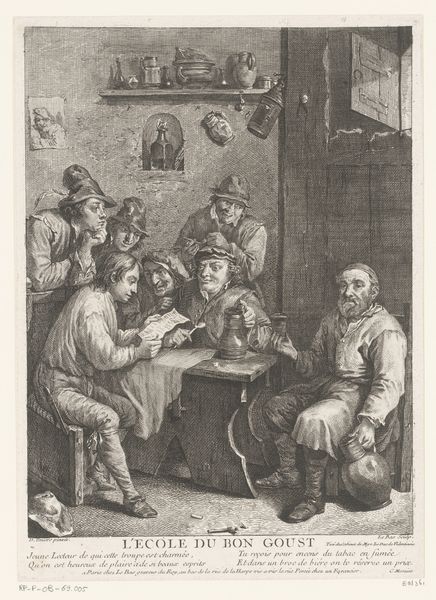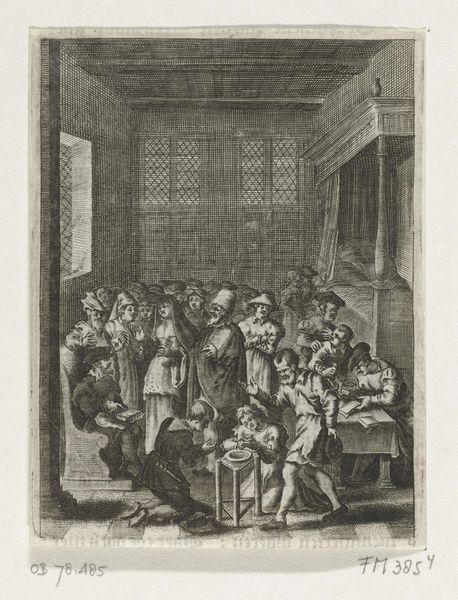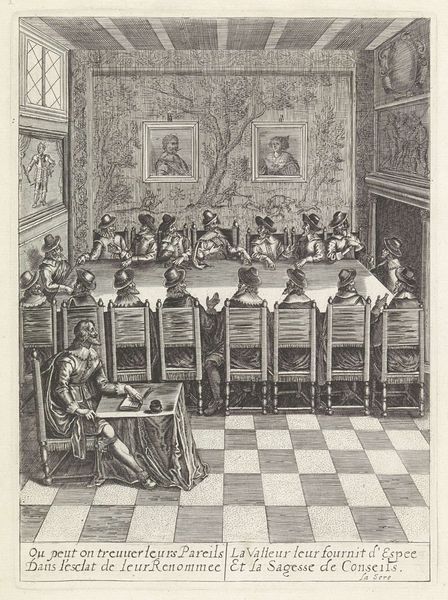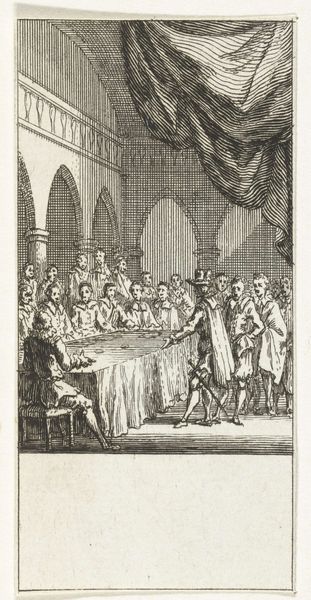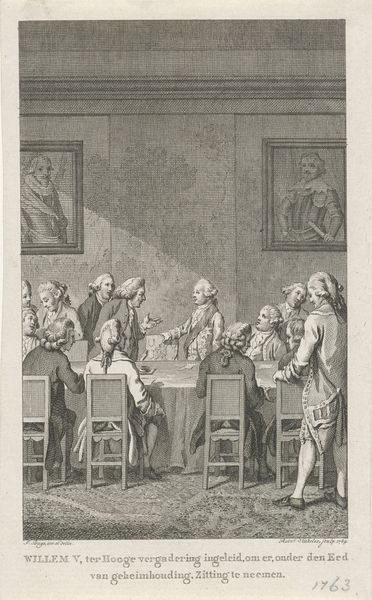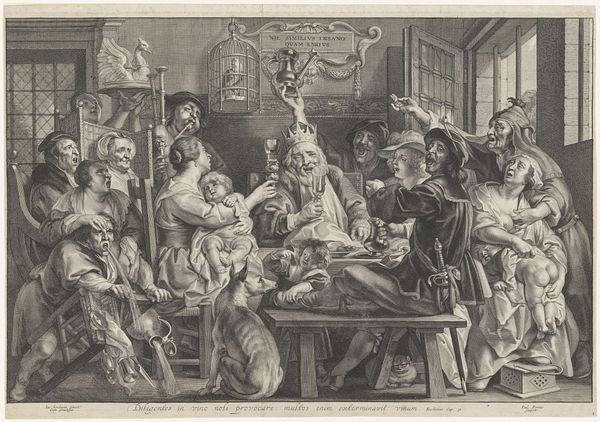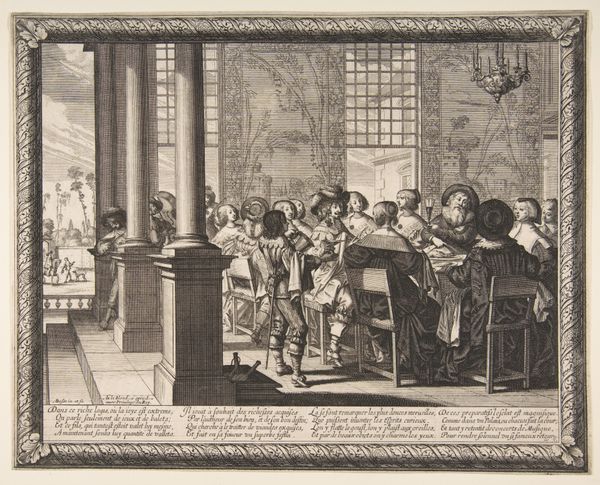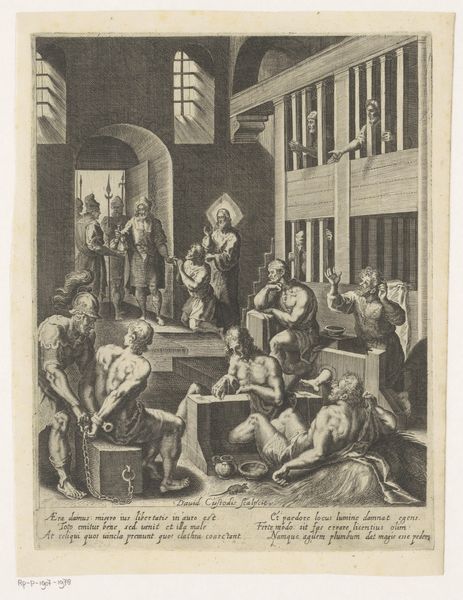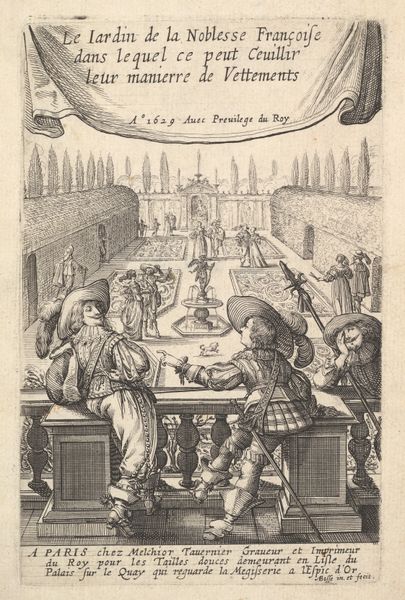
drawing, print, paper, engraving
#
drawing
#
narrative-art
#
baroque
# print
#
pen illustration
#
caricature
#
paper
#
momento-mori
#
genre-painting
#
history-painting
#
academic-art
#
engraving
Dimensions: 455 × 385 mm (image/block); 520 × 424 mm (sheet)
Copyright: Public Domain
Editor: This is "The Reward of Cruelty," an engraving by William Hogarth from 1750. It's incredibly graphic and unsettling. I’m struck by the sheer horror, the detailed depiction of the dissection, and the macabre glee on the faces of some of the onlookers. What are we meant to take away from all this? Curator: Indeed. Consider the image as a compendium of symbols. Hogarth used imagery accessible to his contemporary audience, images laden with moral and societal significance. Notice the skeletons positioned as if observing the dissection; they are not mere decoration, but visual metaphors, _memento mori_, constantly reminding us of the inevitability of death and divine judgement. Can you identify any other visual clues that hint at this being a morality tale? Editor: Well, the man on the table is clearly being punished, and it does look like a stage for this type of thing. Also, is that an organ he's pulling out of the body? Curator: Exactly. The heart being extracted can be interpreted symbolically. The heart, often viewed as the seat of emotions and morality, being removed and cast aside speaks to a corrupted soul, one devoid of empathy. Consider also the burning cauldron below - what could the boiling heads represent? What historical precedent comes to mind when looking at the overall image? Editor: Hmm, maybe it's supposed to show the ultimate punishment. Kind of like how they used to put traitors' heads on spikes. Maybe also the dissection looks a lot like images from medical textbooks but to prove how bad this person was... It’s like he deserves this grotesque display. Curator: Precisely. Hogarth uses established visual language to reinforce his message: that cruelty, in the end, only reaps a horrific reward. It acts as both a denunciation of societal brutality and a reminder of its grim consequences. Do you think such symbols work effectively today, given we live in such a visually overloaded culture? Editor: That’s a good question. Maybe the shock value has diminished, but the underlying message about consequences is still pretty clear, especially with that striking imagery. This image will linger with viewers and be open to interpretation forever. Curator: Yes, the image and the ideas within will likely spark further critical discussion in generations to come.
Comments
No comments
Be the first to comment and join the conversation on the ultimate creative platform.
